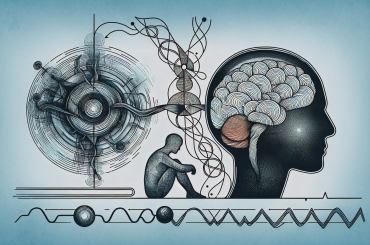With more access to care, removing barriers, implementing prevention, reducing harm, and getting people connected to treatment, we can save lives so people can thrive.
A few weeks ago, we had the chance to talk with Dr. Elyse Powell, the State Opioid Coordinator for the North Carolina Department of Health and Human Services. She understands the opioid crisis inside and out, and she’s full of great insights about its roots and its solutions. Read ahead to see what she had to say!
In The Rooms: What do you think about the state of opioids in NC?
Dr. Elyse Powell: Fighting the opioid crisis that has ravaged NC continues to be a top priority. This epidemic has taken the lives of more than 12,000 people in NC since 1999. This is still a crisis, but we’re starting to turn the tide on this epidemic. Since the launch of the NC Opioid Action plan’s launch in 2017, we have seen a 24% decrease in opioid prescribing and emergency department visits have gone down by 10%.
And for the first time in five years, we are projected to see an estimated 5% decrease in unintentional opioid overdose deaths from 2017 to 2018 … We still have a lot of work to do and a long road ahead, but with more access to care, removing barriers, implementing prevention, reducing harm, and getting people connected to treatment, we can save lives so people can thrive.
ITR: What do you think is the biggest problem causing opioid addiction?
EP: There is no single factor that causes addiction. But the opioid epidemic has put into the spotlight the long-time gaps in how we treat behavioral and mental health nationally. People need access to affordable and comprehensive care.
And our prevention work must both look at reducing the oversupply of opioids, but also at the upstream factors of addiction, including mental health, childhood trauma and more … Preventing overdoses through harm reduction is critical to combatting the epidemic.
ITR: How can we approach the stigma surrounding opioid usage?
EP: It’s important for us to articulate that stigma kills people. It’s pervasive throughout so much of our system, and so it has to be included across our strategies. We are actively spreading awareness, having open dialogues with providers, partners, family members, and those in recovery, across sectors, to increase public knowledge that this is a chronic disease where treatment works and people do recover.
We are emphasizing the need for empathy and strategic approaches to help people recover so they can get back on track, along with their families and communities also feeling the benefit of their improvement.
ITR: What can be done about those who need treatment but have no health insurance?
EP: Nearly half of all people brought to the emergency department in NC with an opioid overdose have no health insurance at all. This presents a huge barrier to these people receiving the treatment and supports they need.
It also makes it very difficult for addiction treatment providers to sustainably provide care … For individuals with opioid use disorder, those with health insurance are twice as likely as the uninsured to receive treatment.
ITR: What role do you think medically-assisted treatment should play going forward?
EP: All people should have access to the treatment and recovery supports that are right for them. SAMSHA recognizes Medication-Assisted Treatment as the gold standard of care, and the evidence showing its effectiveness is well established.
We are working to rapidly expand access to MAT, as well as expand recovery supports for people receiving MAT, based upon the evidence-based results driving success in helping people get back on track.
We wouldn’t put up barriers for someone who is diabetic and needed insulin, or someone with hypertension receiving medicine to help control it. We need to work to eliminate stigma of this evidence-based treatment, too.
Photo by Matheus Ferrero on Unsplash







